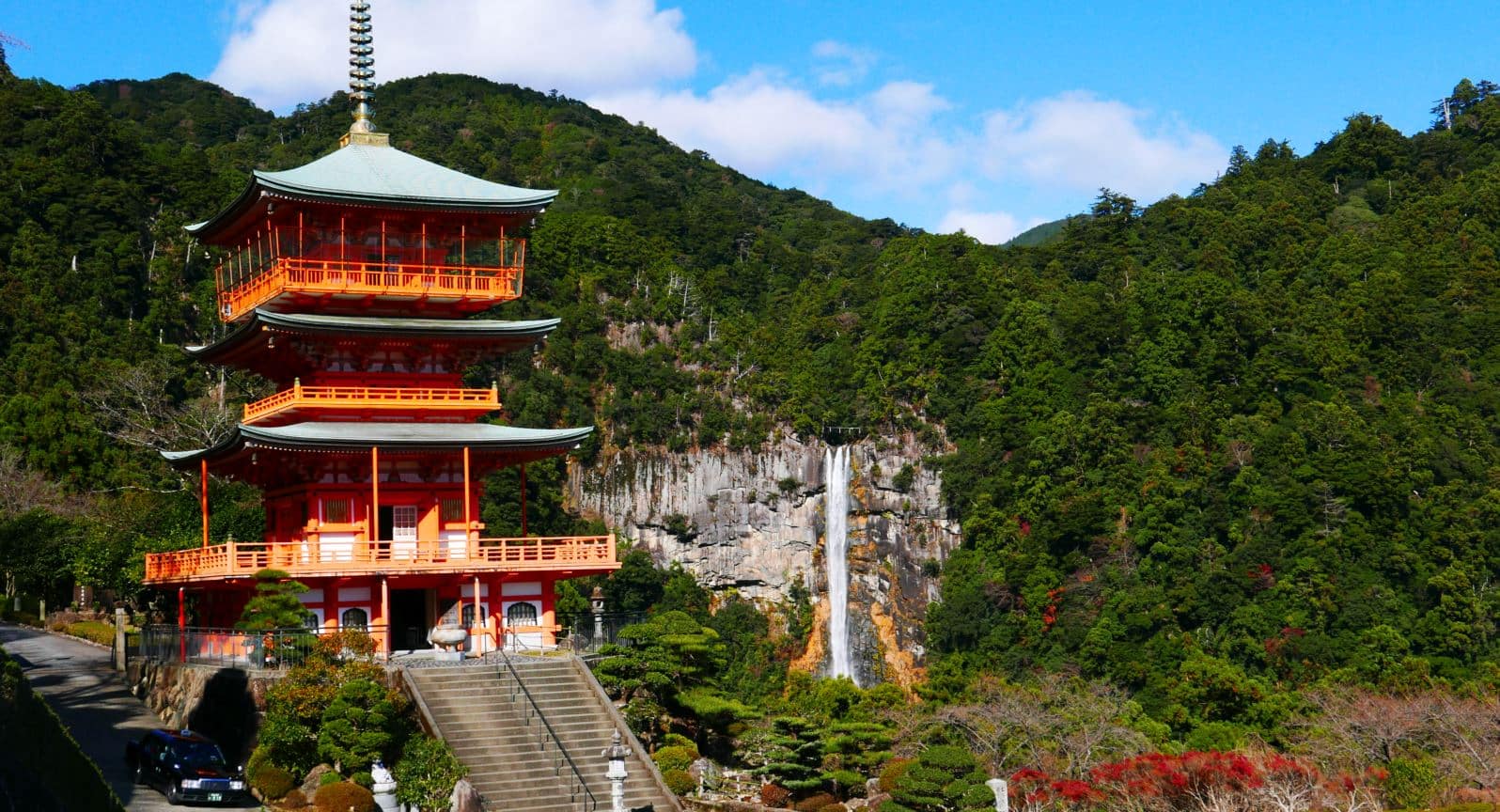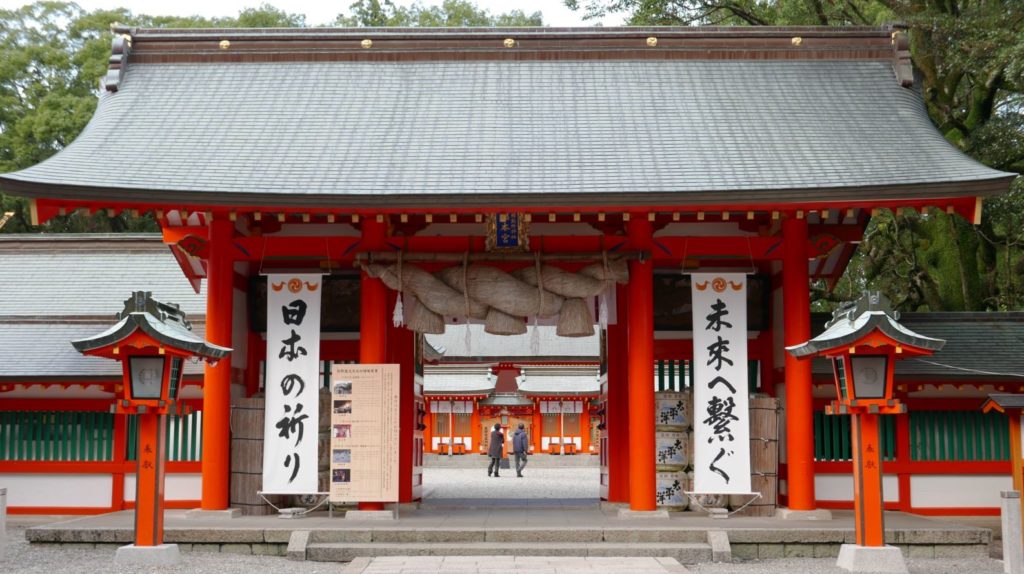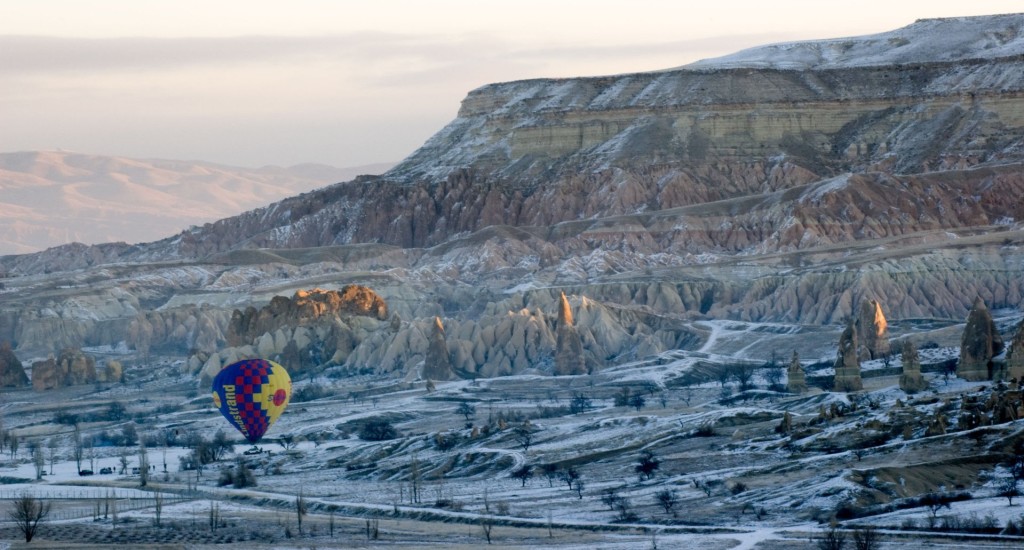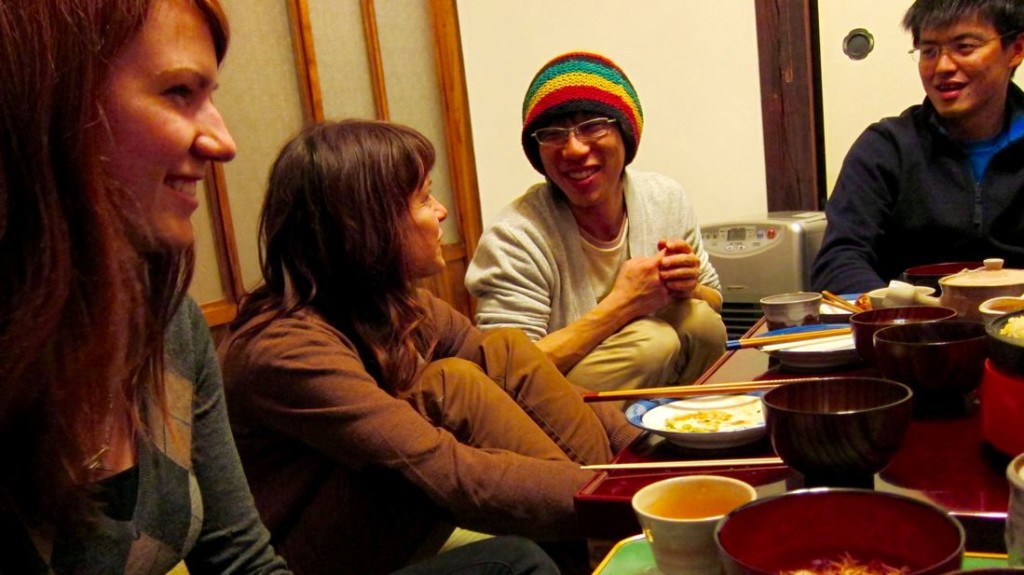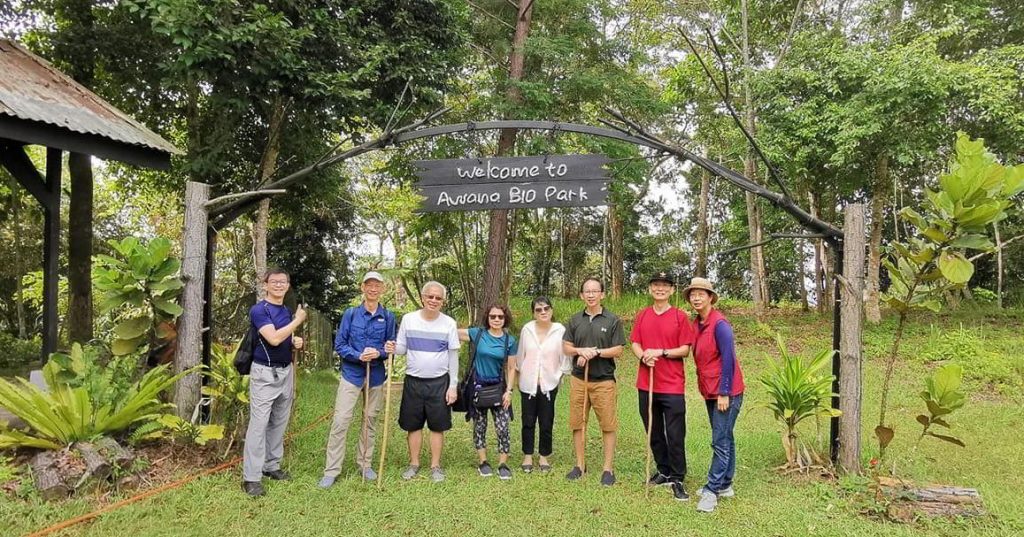14 Dec 2016: Yesterday’s downpour cleared the heavy precipitation in the air. As we stepped out of Sushi House we were greeted with clear blue skies and a light breeze. This is Day 4 of our 9-day driving trip to Wakayama/Mie. The weather channel on my iPhone showed 8ºC and a yellow sunny icon. Can’t ask for anything better as we set off for Kumano Nachi Taisha, one of the three Kumano Sanzan shrines we plan on visiting today.
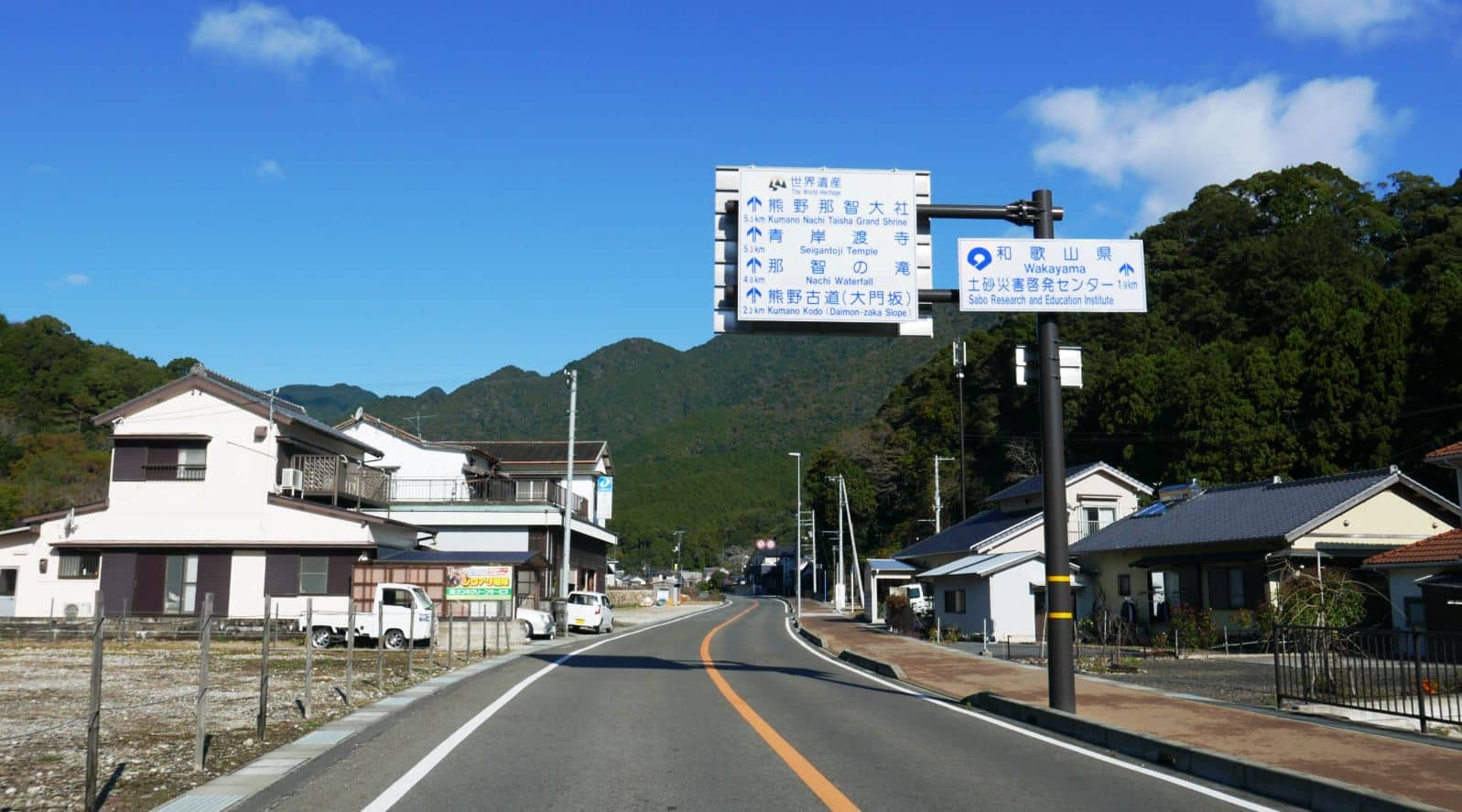
Locations of the Kumano Sanzan:
Kumano Nachi Taisha
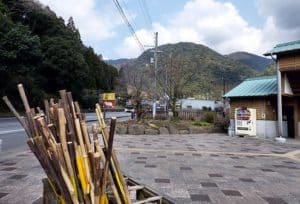
Kumano Nachi Taisha Grand Shrine is widely claimed to be the most picturesque shrine, not only in Kumano, but all of Japan. The Fushimi Inari Taisha in Kyoto is a close contest. Designated by UNESCO as a World Heritage Site it is part of a cluster of religious sites that exemplify the fusion of Buddhist and Shinto influences unique to the Kumano region. The shrine was built around the 5th century near the tallest waterfall in Japan, the Nachi Falls (Nachi-no-Otaki). The waterfall is regarded as a holy a sanctuary and is used by monks who practice Shugendo, a mixed religion of foreign and indigenous beliefs. (Source: http://www.tb-kumano.jp/en/world-heritage/kumano-nachi-taisha/)
There are 2 ways to visit this shrine. Start at the base of the waterfall and make your way up to the main temple complex or vice versa. We chose the latter as it’s definitely easier to trek downhill. The nearest car park to the main temple (¥800 parking fee) is located at mid-levels. From here it’s a short trek, about 200 steps, up to Nachi Taisha Grand Shrine and Seiganto-ji temple. Walking poles are provided near the car park, useful for my legs that are decades past its prime.
The Seiganto-ji temple is located next to Nachi Taisha shrine. And just a short distance away is a 3- storied pagoda which is part of the temple complex.
We spent 3 hours exploring the shrines, pagoda and the waterfall. It’s a 600 step trek down cobblestone slopes (aka Daimon-zaka) to the waterfall. We were glad to have chosen to walk down rather than up. The tranquility of this place beckons one to stay longer. It’s a pity that’s all the time we had.
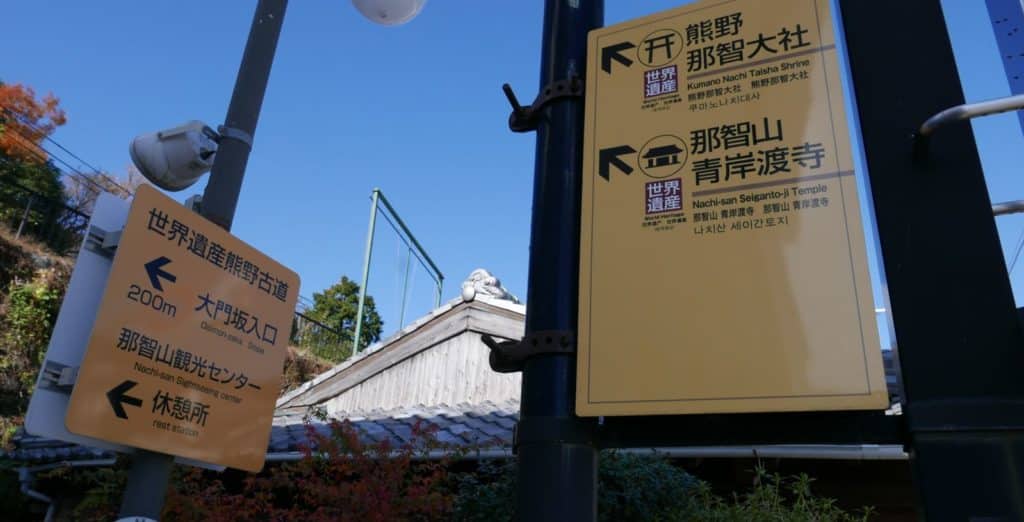
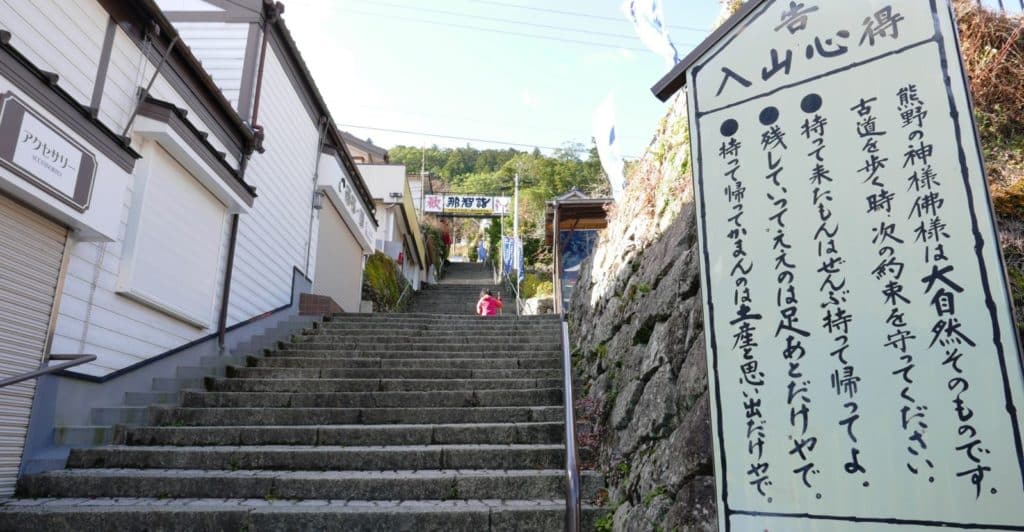
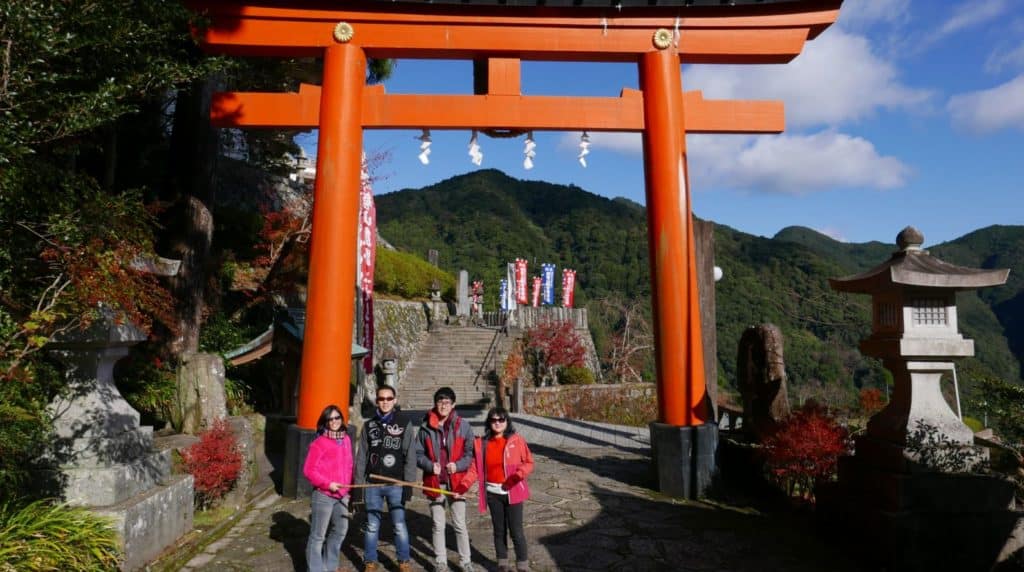
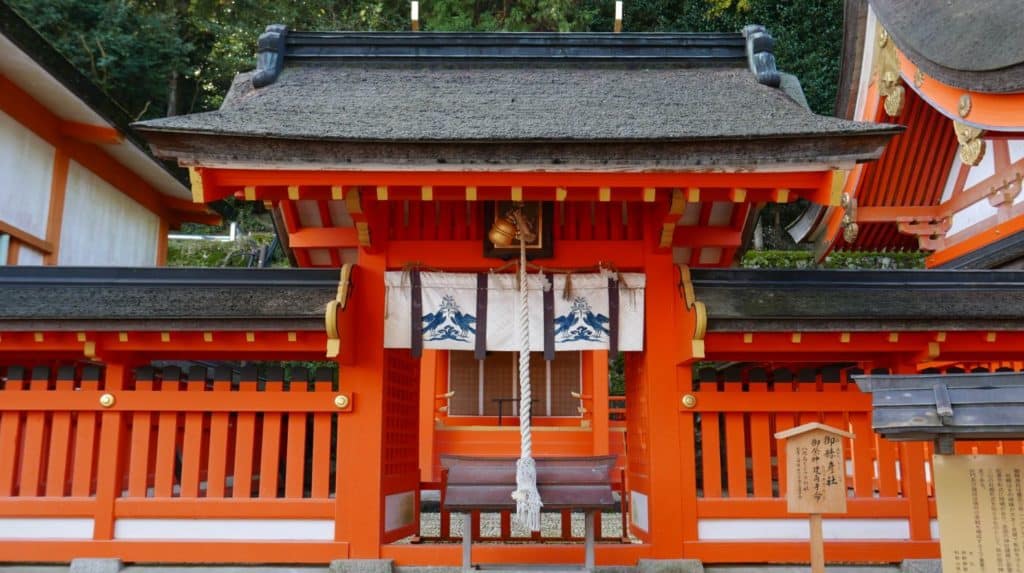
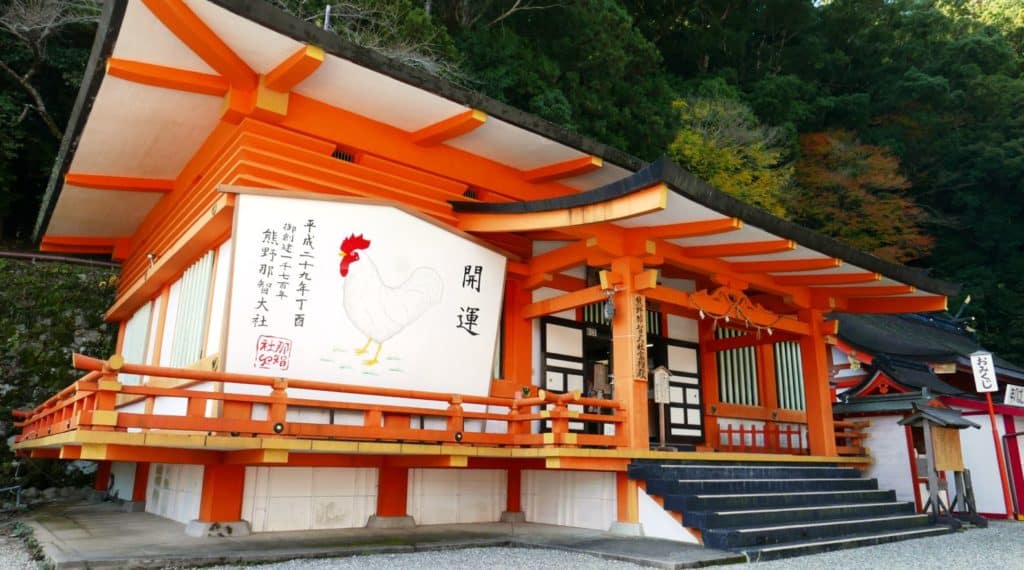
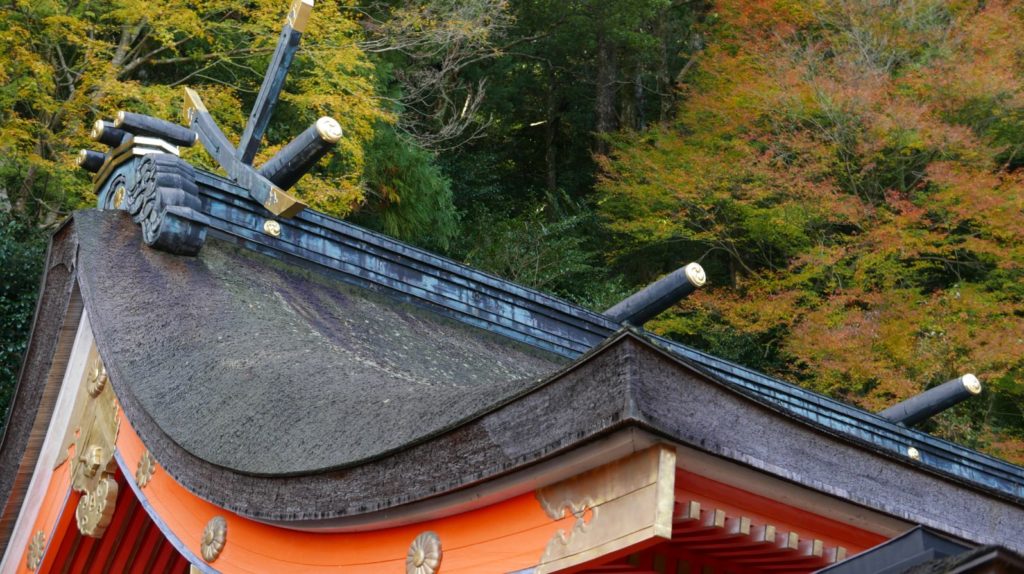
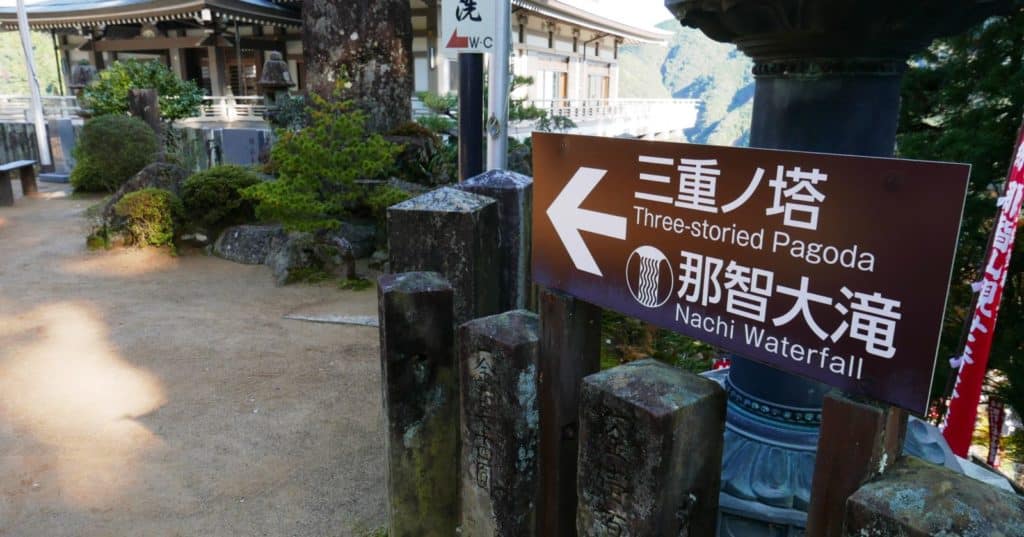
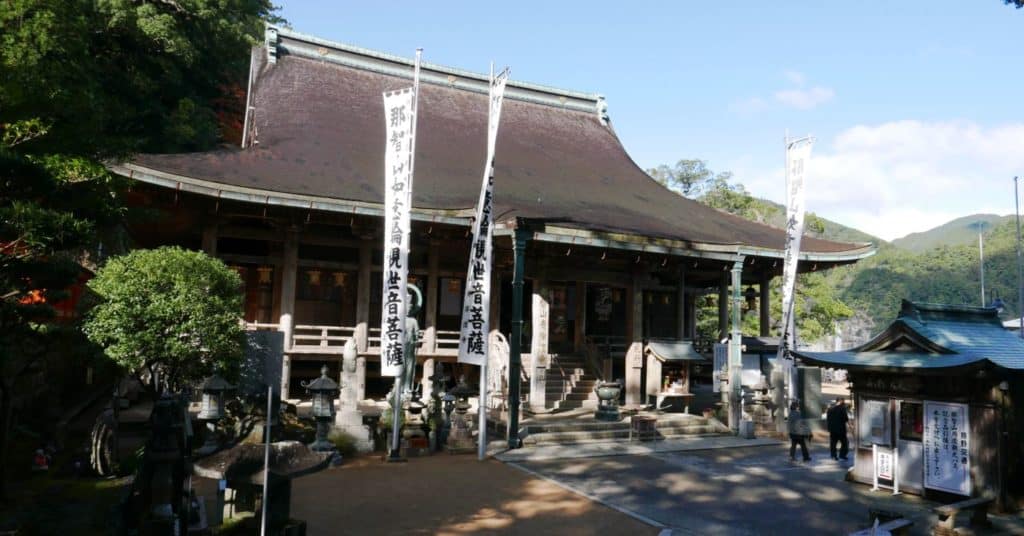
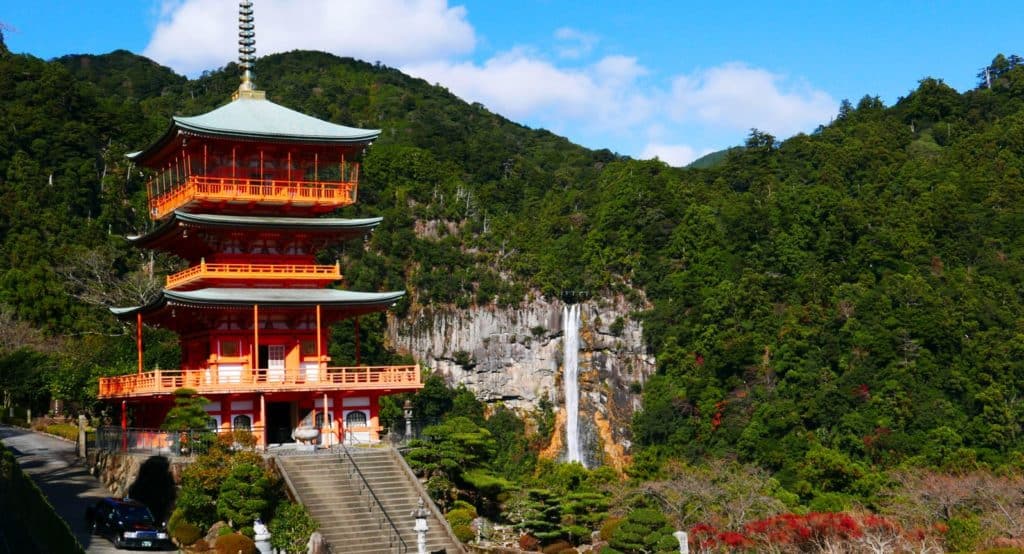
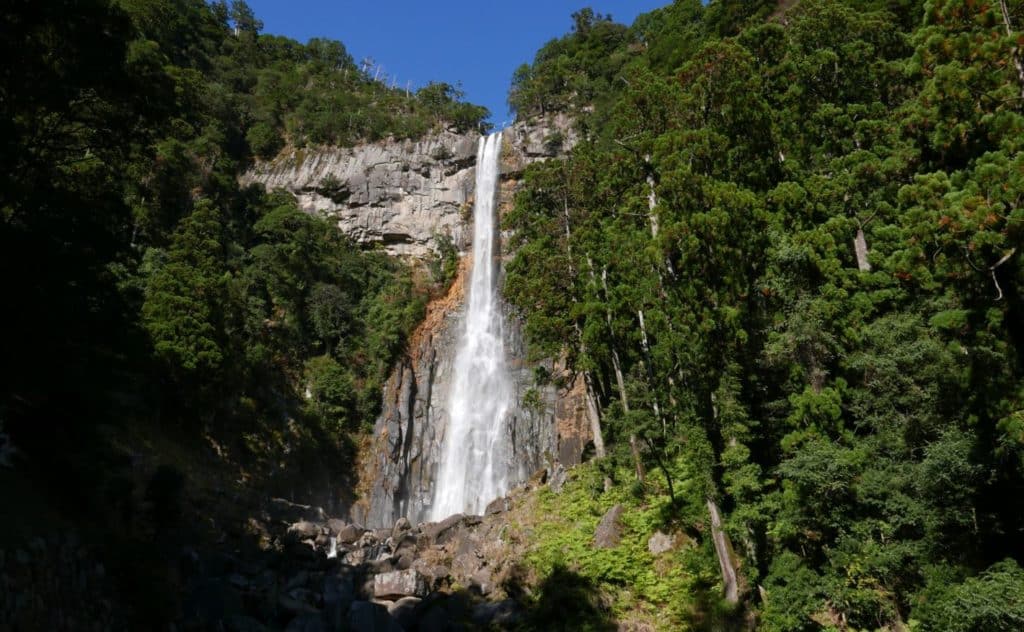
Kamikura Shrine – a UNESCO World Heritage Site
The plan was to visit 3 shrines today. After a quick lunch we headed for the Kamikura Shrine. As the daylight hours are short in winter we had to make haste before the sun sets.
Kamikura is not one of the Kumano Sanzan shrines. But it is a must see according to Tripadvisor which rated it #1 of things to do in Shingu.
According to ancient myth, a large outcropping of bare rock named Kotobiki-Iwa, is where the three gods of Kumano originally descended. So they built a shrine next to it and named it Kamikura, meaning the “Seat of the Gods”. The huge rock is wrapped with a large Shimenawa (sacred rope) to demarcate the boundary between the sacred and the profane.
We arrived at the Torii gate entrance at around 2 in the afternoon mentally prepared for the climb up the steep steps to the shrine. According to official count there are 538 steps. These stone steps are stacked unevenly so it can be rather treacherous especially if they are wet. Fortunately for us it was dry today.

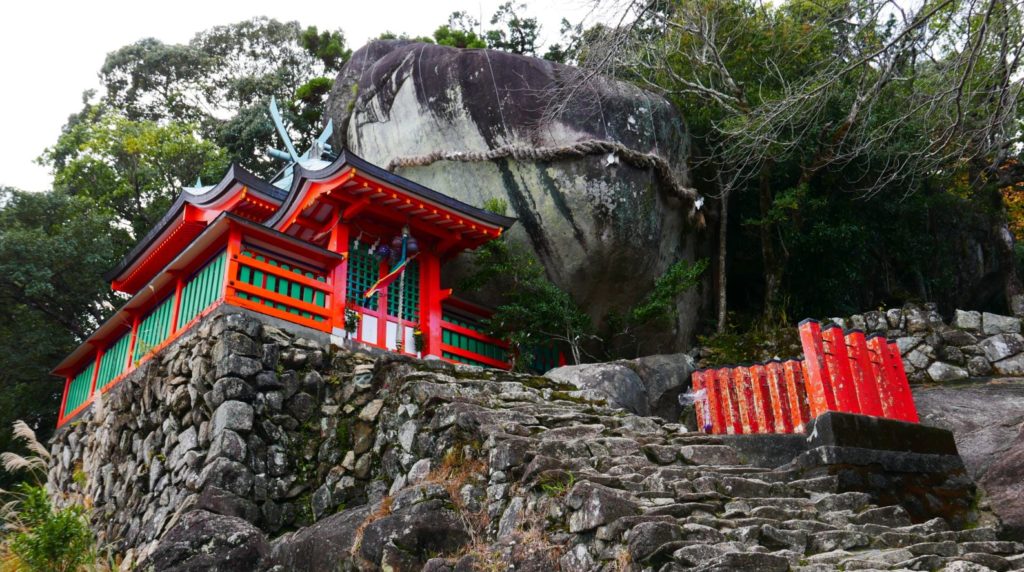
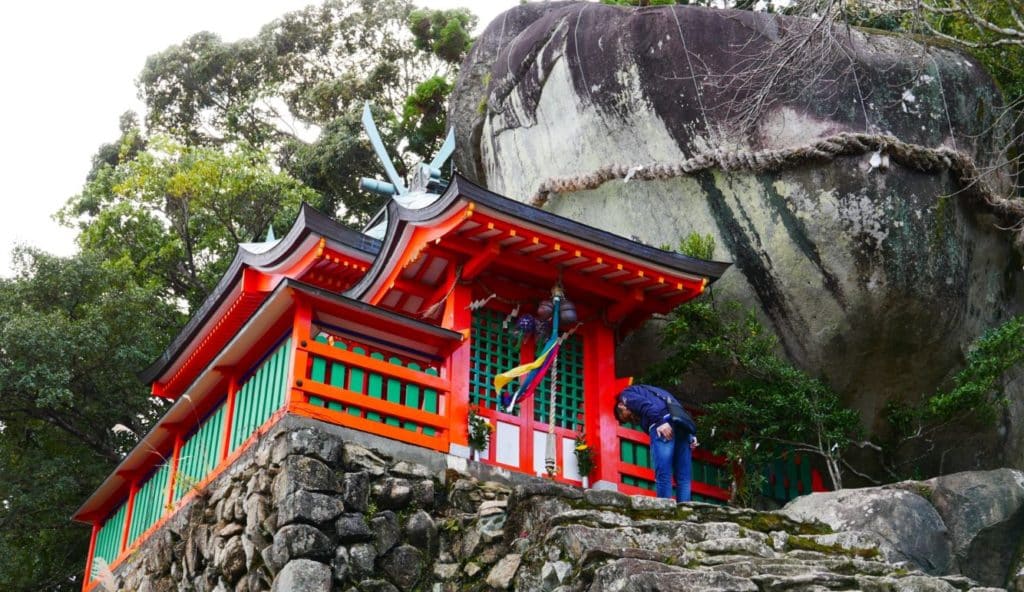
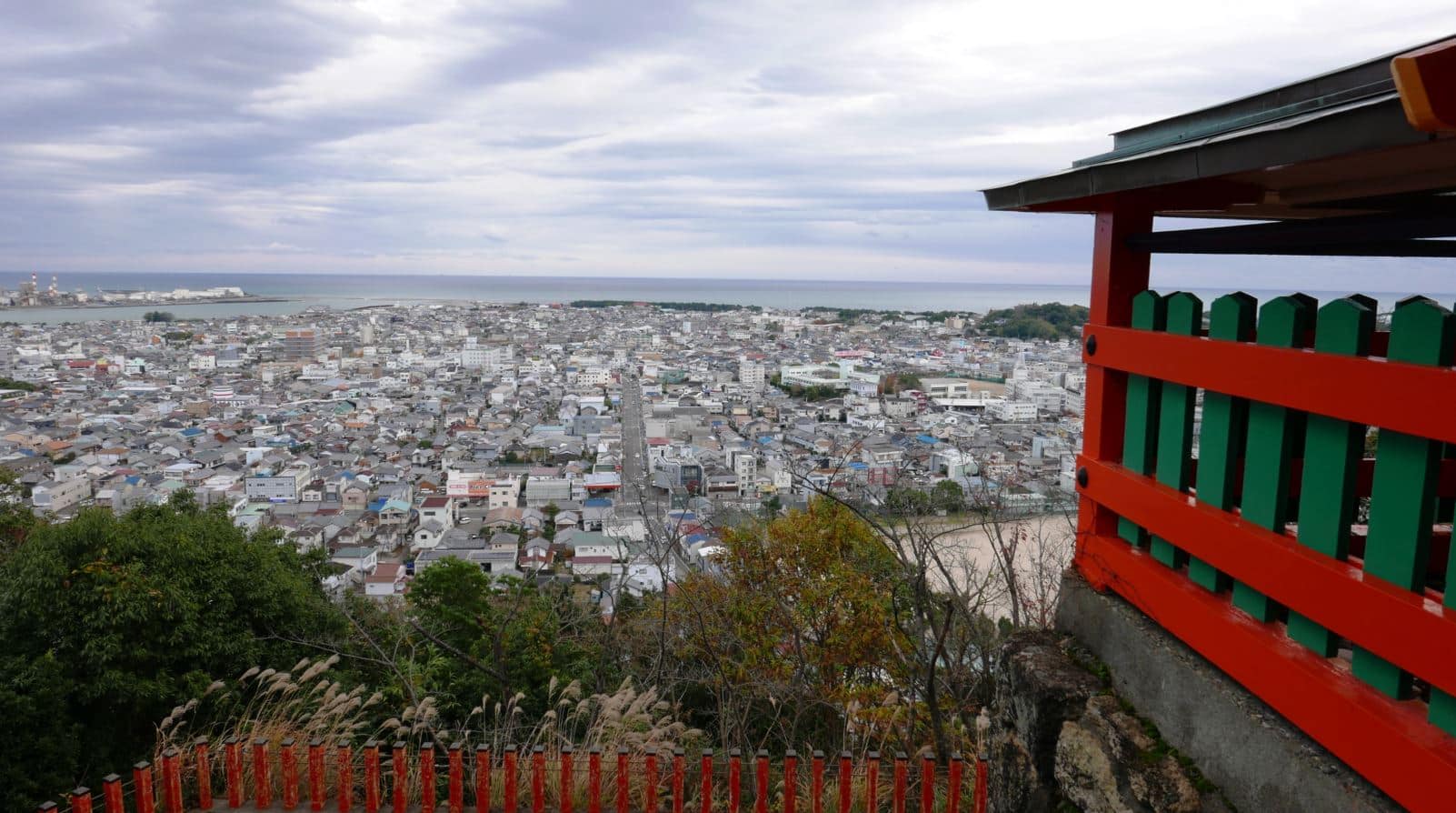
The panoramic views over Shingu town and the sea beyond repaid our effort many times over. It also made us appreciate the effort pilgrims had to make to be here to make their offerings to the gods. Apparently, every year on the 6th of February, in a festival known as the Oto Matsuri, hundreds of men dressed in white robes wielding fiery torches in their hands race up and down en masse making it appear like a huge fiery serpent descending the mountain.
Kumano Hayatama Taisha
There was still an hour of light left as we headed for Kumano Hayatama Taisha. Located by the Kumano Riverbank it was recently rebuilt on the same site with origins from the 12th century. Instead of a rock, the kami (god) of Hayatama is a sacred tree (estimated to be over 800 years old) located inside the shrine compound. These two kamis highlight the importance of nature worship to Kumano’s origins. The shrine is not very big and can be covered in an hour.
Also on display in Hayatama Taisha’s Treasure Hall are over a dozen national treasures, including offerings brought by pilgrims on the Kumano Kodo. The collection housed in this small museum is impressive, with more national treasures than most major museums.
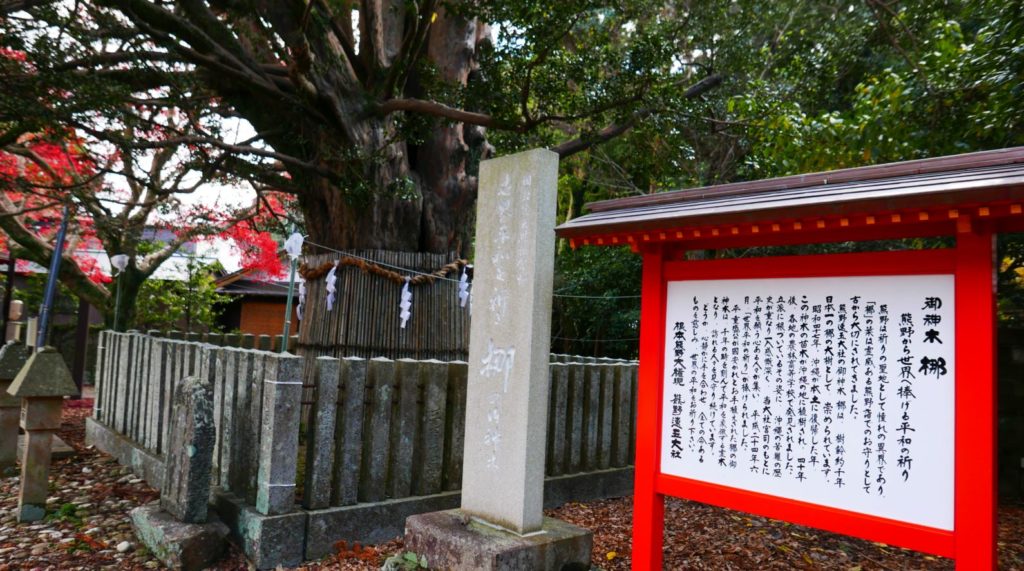
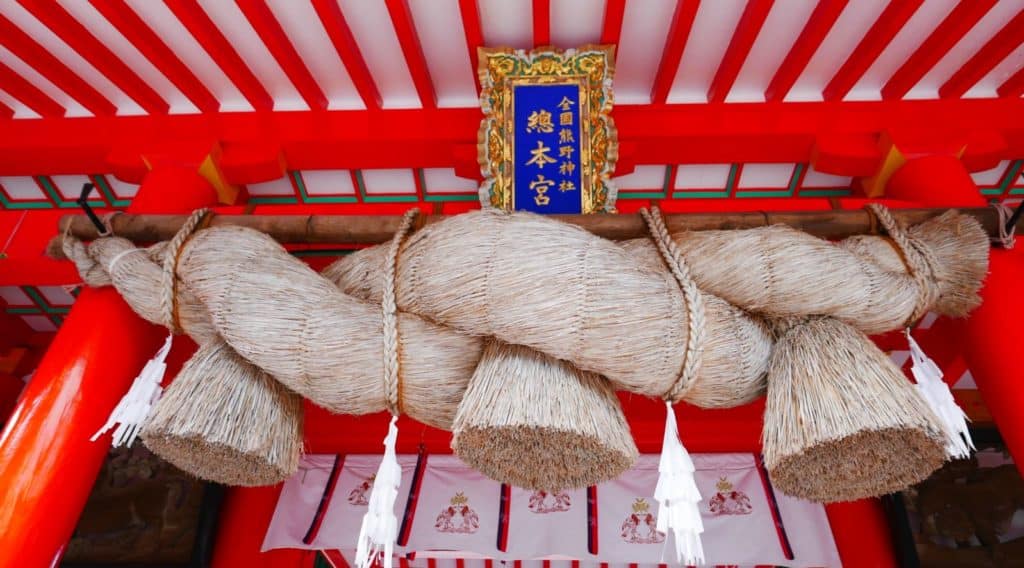
How to get to the shrines:
Kumano Nachi-Taisha Shrine
Address: 1 Nachisan, Nachi-katsuura-cho, Higashimuro-gun, Wakayama Prefecture
Hours: 5:30am – 4:30pm, Homotsu-den (Treasury Hall) 8:30am – 4:00pm Open 365 days
Access: Take the Kisei Main Line from JR Shingu Station to JR Kii-Katsuura Station. Take Kumano Kotsu Bus for Nachisan (about 20 min) and get off at “Daimonzaka Chushajo-Mae”. 5 minutes walk to the entrance of Daimonzaka.
GPS: 0735-55-0321
Kamikura Shrine
Address: 1-13-8 Kamikura, Shingu City
Access Approximately 30 min walk from JR Shingu Station
GPS: 735-22-5051 (this is the Eneos gas station nearest to the shrine. Park near here and walk following the directional signs)
Kumano Hayatama-Taisha Shrine
Address: 1 Shingu, Shingu City, Wakayama Prefecture
Hours: 5:00am – 6:00pm (changes depending on seasons) Shinpo-kan (Treasury Hall) 9:00am – 4:00pm
Access: About 15 minutes walk from JR Shingu Station
GPS: 0735-22-2533
Related Posts:
Day 1: Nagoya to Ise-Shima
Day 2: Exploring Ise-Shima and Ago Bay
Day 3: Scenic Drive From Shima to Shingu
Day 5: Driving From Shingu to Kyoto via Nara
Also read my tips on renting a car in Japan.
- Dalat | Vietnam Trip Part 3 - May 4, 2023
- Danang, Hoi An, Hue, My Son | Vietnam Trip Part 2 - May 1, 2023
- Ho Chi Minh City, Cu Chi Tunnels & Cao Dai Temple | Vietnam Trip Part 1 - April 30, 2023
